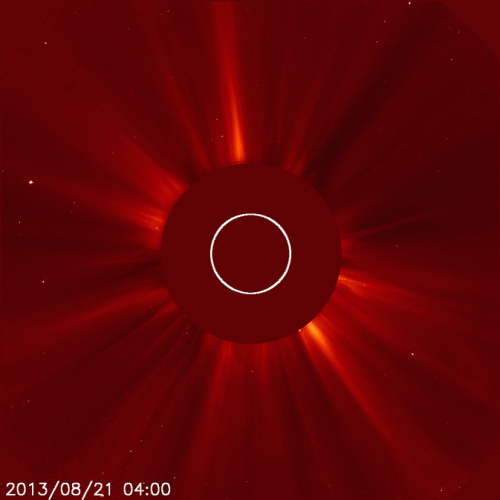NASA sees another Earth-directed CME

On August 21, 2013 at 1:24 am EDT, the sun erupted with an Earth-directed coronal mass ejection, or CME, a solar phenomenon that can send billions of tons of particles into space and reach Earth one to three days later. These particles cannot travel through the atmosphere to harm humans on Earth, but they can affect electronic systems in satellites and on the ground.
Experimental NASA research models, based on observations from NASA's Solar Terrestrial Relations Observatory show that the CME left the sun at speeds of around 380 miles per second, which is a fairly common speed for CMEs.
Earth-directed CMEs can cause a space weather phenomenon called a geomagnetic storm, which occurs when they funnel energy into Earth's magnetic envelope, the magnetosphere, for an extended period of time. The CME's magnetic fields peel back the outermost layers of Earth's fields changing their very shape. In the past, geomagnetic storms caused by CMEs of this strength have usually been mild.
Magnetic storms can degrade communication signals, cause unexpected electrical surges in power grids, and produce aurora at higher latitudes.
NOAA's Space Weather Prediction Center is the U.S. government's official source for space weather forecasts, alerts, watches and warnings.
Provided by NASA's Goddard Space Flight Center





















